
The art of pressing and the future of vinyl
An open discussion on vinyl and creativity at The Vinyl Factory pressing plant.
In late April, writer, DJ, producer and co-founder of record label Butterz, Elijah, teamed up with Vinyl Alliance to lead a group of multi-disciplinary artists around The Vinyl Factory pressing plant to grant them a greater insight into the vinyl manufacturing process and uncover how a deeper understanding of vinyl could enhance their creative practice.
The group, made up of TIGRIS, David Chen, Tash LC, Adam 1Up, Charisse C, Damsel Elysium, Kirrolus, Yaw Evans and Eugene Angelo, embarked upon an open discussion after seeing the vinyl-making process which further demystified the industry and explored how each individual, from their varied perspectives, could engage creatively with the format.
Below is an outline of the discussion, featuring contributions from Elijah, The Vinyl Factory’s Adam Teskey and Audio Technica’s Edward Forth.

Elijah: Does anyone have questions for The Vinyl Factory team?
Eugene Angelo: I’ve got a question about distribution. From this point, how does vinyl get to a record store?

Adam Teskey: If you’re doing a small release–say 200 records–you can have them delivered to your office and your customer can buy them off your website and you ship direct to the customer.
If you want to distribute worldwide, you probably need something more traditional, like a distribution company that has outlets worldwide. It depends on the numbers, how your label is set up and who you’re signed to.
Tash LC: Have you guys seen a big shift in demand over the years? What point was vinyl at the most popular in the time you’ve been here?
Adam: In our financial year 2022, we made nearly 2 million records. In our last financial year, we made just over a million. The Press is still reporting that retail sales seem to be on the way up. I think there’s an element where stuff that we pressed eight, or twelve months ago, has been in distribution in warehouses and is still selling through, but the new sales aren’t following it. The guys reporting retail sales aren’t lying, but they’re selling stuff that isn’t probably being made fresh.
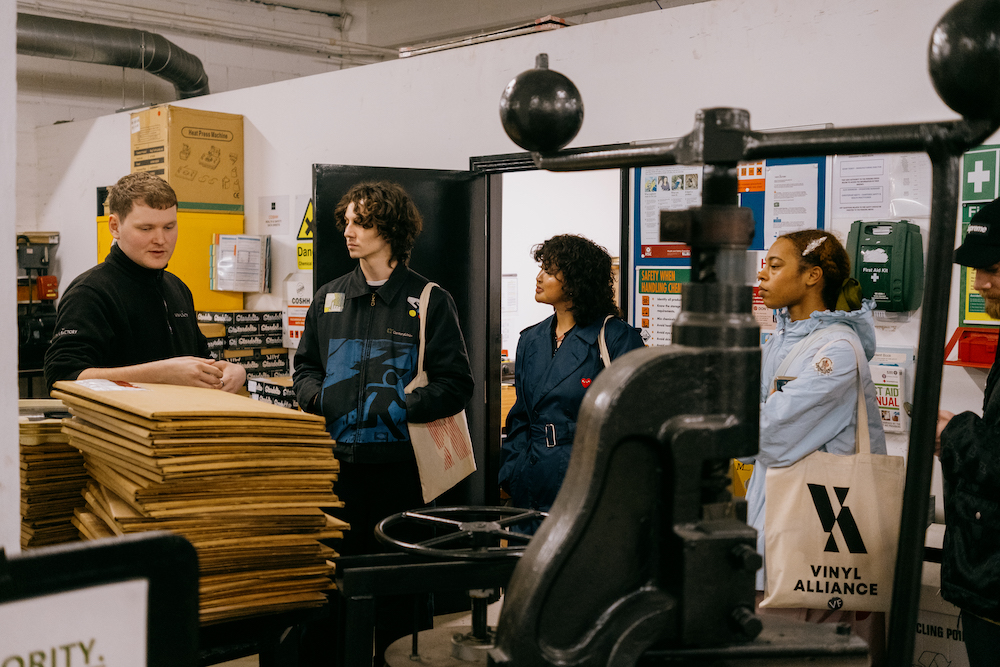
Ed Williams: We think that, during the pandemic, when everyone was buying records because we were all home, labels started overstocking on their releases. On the production end, it feels like fewer records are going out into the world. That’s because there is a bunch already out there that people are holding onto that will sell. With this huge spike during the pandemic when no one could go on holiday, we’re still kind of working back to normality after that, still figuring things out.
Adam: There are other things. Let’s say the majors were doing ten releases. A false market was created, in a way. The supply was getting outstripped by the demand because when they were doing a new release, they’d normally do it as 2000 but if they thought they had a hit on their hands and they couldn’t get reorder quick enough, they were doing initials from 4000, 5000.
Then we had this dynamic where there was a lack of capacity and they were putting on 20,000 reorders instead of 5000 reorders. Can you imagine that happening across ten or 20 different titles? That creates a bottleneck. I believe that’s what’s now getting sold through, which means pressing plants’ numbers are levelling back down.

Edward Forth: During the pandemic, year on year, turntable sales were up between 25 and 40%. It’s not just people buying records, people are buying turntables at the same time. That’s plateaued out a bit, even so, the growth is considerably more than before the pandemic. People weren’t just buying records, those people were new to records and were also buying turntables.
Tash LC: Are there any records that are always consistently being pressed?
Adam: King Crimson KCLP1 is something that we’ve been pressing since about 2010, and they are reordered every month. That’s what we’d call a hardy perennial that we all just keep pressing constantly.
When somebody’s building a record collection, certain records have to be in it to make it a certain type of record collection, depending on what sort of music you’re into. Let’s say you’re into rock, so Dark Side of the Moon has to be there or Led Zeppelin. They will sell forever.

Tash: Imagine making a record like that, that lives through decades and decades. That’s mad.
Adam: That’s a great thing about record collection. When you listen to music through a computer or digital device when you go around to somebody’s house, you can’t flick through, can you?
With a record collection, when you go to somebody’s house, the first thing you gravitate to is their record collection. You can actually go through different stages of their life and what sort of music they’re into.
Elijah: There’s inheritance as well–all of those records that maybe they don’t have to buy again that are passed down, passed down, passed down.

Adam: The great thing about the second-hand market is the sustainability. Nobody throws a piece of vinyl away, you know? You either swap it with someone, take it to the charity shop, or you die and it gets left with your kids and whatnot. You don’t see many record collections in skips, do you?
David Chen: Where do you reckon the future of records is?
Adam: There will always be vinyl. In the late ’90s and early ‘00s, there was a certain amount of pressing plants who just stuck with it for no reason. They could have died without ever being able to be resurrected. Those bits of kit, the Neumann lathes, the lacquer guys that were in Japan and America at the time, if they had all just shut up shop, even with super money you couldn’t have started it again. It was only because people soldiered through that we have an industry we can jump back into.
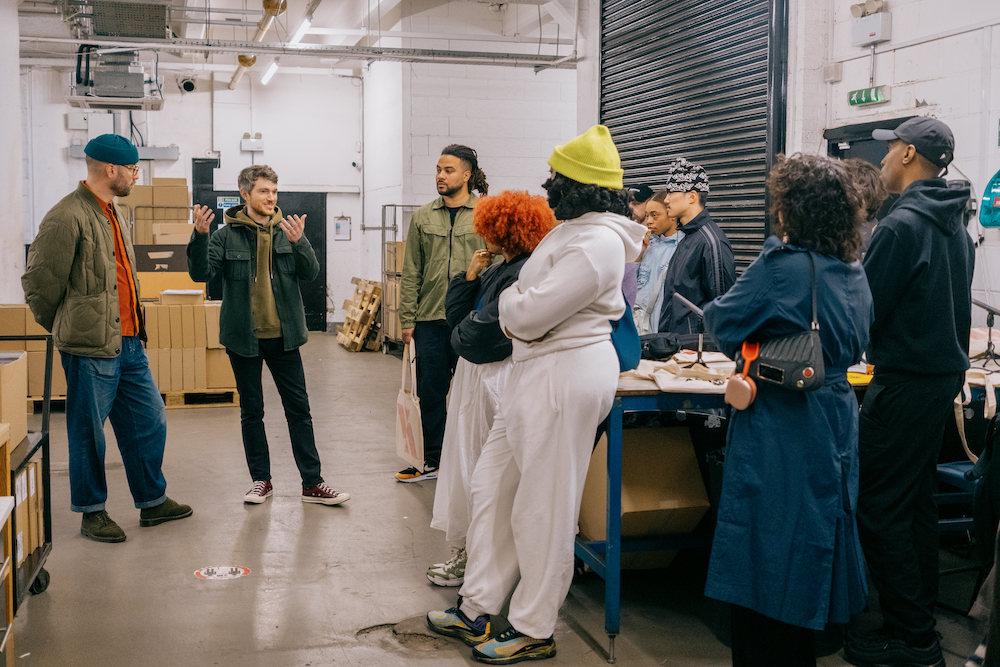
We’ve still got people my age that buy vinyl because we’ve always bought vinyl. At the other end of the generation gap, it became fashionable, or it had more added value and, let’s not forget, it sounds better.
Elijah: Has seeing how the records are made sparked off creativity that you wouldn’t have had if you hadn’t seen the process?
Eugene Angelo: Well, I’m always just interested in bending the machinery that you use to make stuff against what it’s traditionally used to do. I’ve designed vinyl before, but seeing how it is made gives me the confidence to push against the standard guidelines.
Elijah: Do you feel confident that now you’ve got information and seen how it works, you could go and press it yourself or ring up the office?
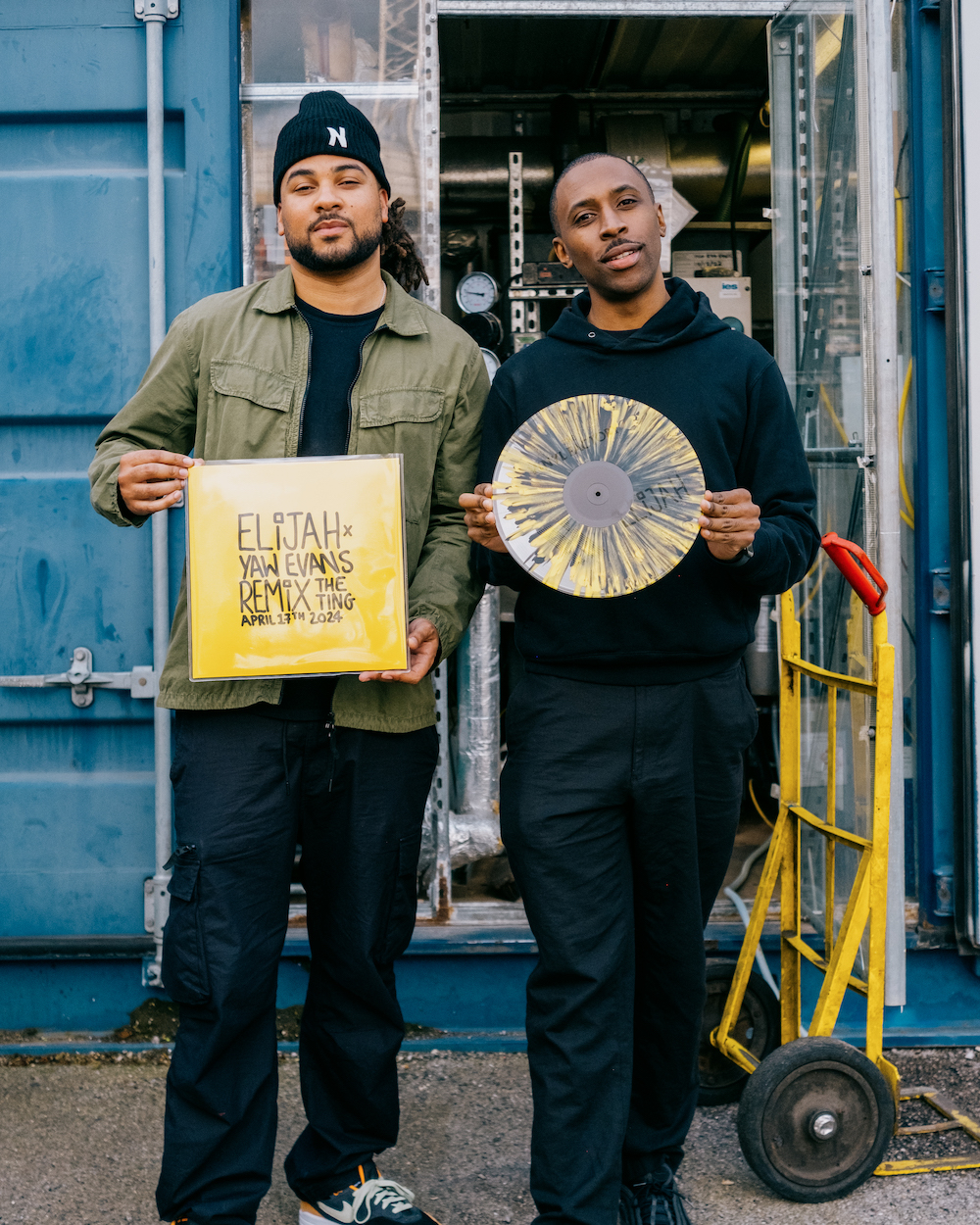
Adam 1Up: I do. My worry is if I get a run of 300, I’m going to sell ten and be left with 290. My dream is to get my tunes pressed on vinyl and to do a vinyl-only release. If I had the audience and the appetite, I would only ever release on vinyl. I love it that much. It’s just that I’m looking at saving money or writing that money off.
I don’t want to look at it like that. It’d be nice to make a bit of money out of it or break even, but I feel like to get my stuff pressed I’m going to have to drop a couple of grand and say bye to it.
Elijah: You could find another way for it to connect with the audience. It might be like a ticket for a rave, for example, comes with a record and so forth.
Tash: Exactly, which a lot of people are doing now. Nia Archives did that with her merch–there’s more to it than just having the records. It’s a package kind of thing, which I think is cool and old-school.
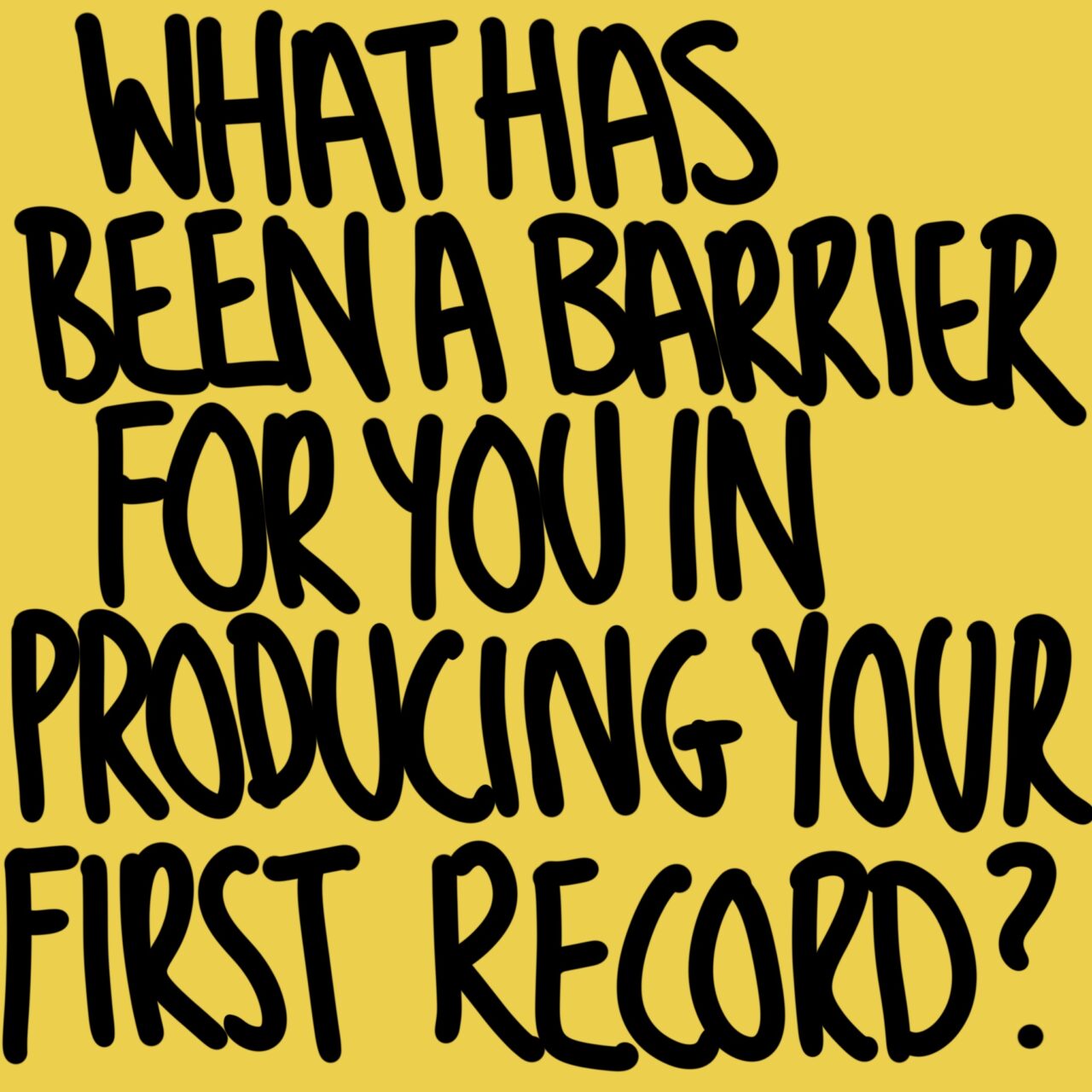
Eugene Angelo: I think part of why vinyl, to me, seems like it’s going to be around forever is because of the discipline it has in itself as an object. I think it’s found this balance where you can fuck around and have new ideas with the packaging, but then it’s like, you can still have the same record that’s been pressed today like one that we pressed 60 years ago, and you can still play that on two decks and a mixer, you know?
TIGRIS: Being here makes me think there’s a need for true appreciation of craftsmanship. I think it’s interesting how each track has their grooves on the vinyl, it’s so unique. But how do we highlight that visually a bit more in the physical object? Most records are that same shape. I know there are different ones that are slightly more irregular but how can we make it so it’s more expressive in that way?
The splatter presses that we did are really cool because it’s also so nuanced. Each one is unique to whoever is making it. I feel like we need to showcase that a lot more.
I’m also thinking about how people are buying records without a turntable. It’s so intimate having an object. Making the decision to buy a physical object is so unique because it’s informing the story. When you go to a gig, only at that gig will they sell a certain t-shirt maybe because it’s to encapsulate that memory. It’s so meaningful when you spend your hard-earned money to buy the object, put it in your house, because it’s also a reflection of you.
Other people who come into your home, they’re like, “Oh, what’s that album like?”. They get a gauge of your personality. It’s really important to be able to express yourself as the artist… and then the person having that art, that vinyl, as a reflection, but also as an extension of their identity. It’s like artists are the foundation, or the catalyst, that allows for that to happen.

David Chen: To add to that, we think of design as, like, nature is the most beautiful design because it’s evolved to do one thing very well over millions of years. What we see in records is that the physical form that has evolved from when music started and has been consumed up until the digital age. It’s designed very well to just do one thing and do it beautifully.
Nowadays, in China for example, there are mega apps that are being designed where you can rent a car and pay your mortgage and chat with people on the same app. These things are so multifunctional and people try to cram everything into one thing. There’s this sort of sensory overload, or just general overload but there’s always beauty and simplicity in having something that’s designed to do one thing really well. I think there’s always going be that elegance to records.
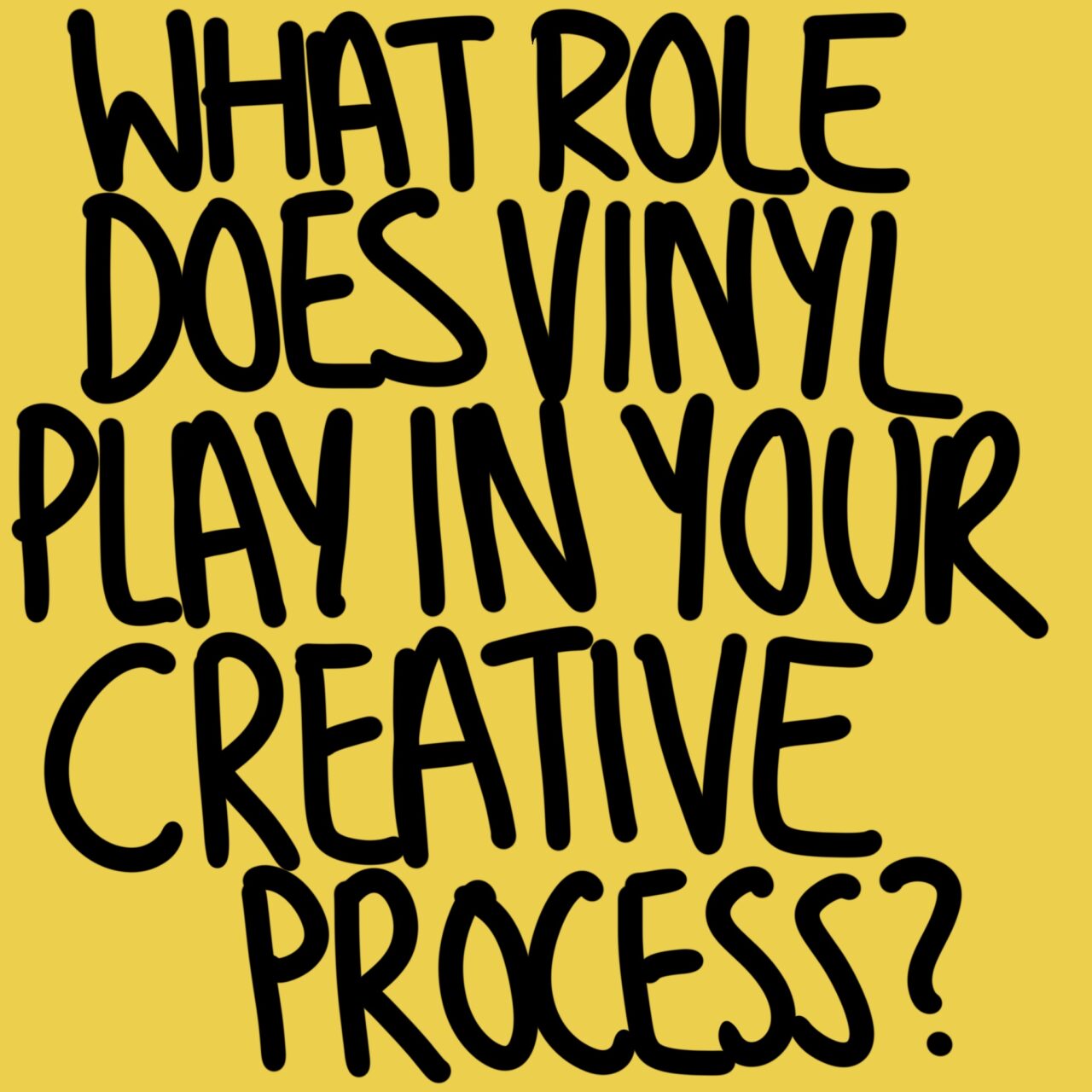
Damsel Elysium: Seeing this has given me a lot of inspiration to be a bit more hands-on, especially the colour and customising it and making it, almost like a relic, rather than it just being… you’ve got the digital version and the physical version. It’s like, no, this is special. I also think, because my audience is quite small, I like the idea of them being this limited run. You get it in the moment and never again kind of thing.
It’s interesting seeing the music from decades ago that is still selling. I love the idea of it being a really special piece. Like, this record we made today… we’re the only ones that have it. I’ve got another EP coming out at the end of the year. I’m thinking about the format of it both visually and sonically. I’m thinking of it like a diptych, an actual art piece, rather than just being like, “Oh, it’s a physical record”. It’s a whole kind of visual, sensory and sonic experience.
Adam: After 100-odd years, isn’t it fantastic that we are all still standing here talking about vinyl? It’s still invigorating people, still challenging people.
To find out more about the Vinyl Alliance and its work exploring the future of the vinyl record format, visit them here or follow them on Instagram.









